|
Next Monday, 18 March, marks the tenth anniversary of Russia’s annexation of Crimea. The move followed swiftly on from Ukraine’s Euromaidan Revolution, which culminated in then-president Victor Yanukovych’s flight from Kyiv in late February 2014. Russia took advantage of the chaos in Kyiv, quickly seizing military bases and government buildings in Crimea.
Armed men in combat fatigues began occupying key facilities and checkpoints. They wore no military insignia on their uniforms and Russian president Vladimir Putin insisted the “little green men” – as Ukrainians called them – were acting of their own accord, and were not associated with the Russian army. Only later did he acknowledge the role of the Russian military in the occupation, even awarding medals to those involved. By early March, Russia had taken control of the whole peninsula and its ruling body, the Crimean Supreme Council, hastily organised a referendum for 16 March. The vote went ahead without international observers and was widely condemned as a sham. It offered residents two options: to join Russia or return to Crimea’s 1992 constitution, which gave the peninsula significant autonomy. There was no option to remain part of Ukraine. The result, predictably, was landslide in favour of becoming part of Russia. Turnout was reported to be 83%, with nearly 97% voting to join the motherland, in spite of the fact that Ukrainians and Crimean Tatars made up nearly 40% of the population. The accession treaty was signed two days later. In May that year, a leaked report put turnout at 30% with only half of all votes cast in favour of becoming part of Russia. The annexation of Crimea gave an immediate boost to Putin’s approval ratings, following a turbulent period of pro-democracy protests across Russia in 2011-12. In the face of a weak economy, Putin’s re-election campaign in 2012 had focused on appealing to Russian nationalism, and the swift and bloodless coup in Crimea provided a perfect model for his propaganda narrative. The peninsula had first become part of Russia in the eighteenth century under Empress Catherine the Great, who founded its largest city, Sevastopol, as the home of the Russian Black Sea Fleet. Crimea was part of the Russian republic of the Soviet Union until 1954, when it transferred to the Ukrainian Soviet republic. When the USSR collapsed in December 1991, the successor states agreed to recognise one another’s existing borders. Russia’s seizure of Crimea violated, among other agreements, the UN Charter, the 1975 Helsinki Final Act, the 1994 Budapest Memorandum of Security Assurances for Ukraine and the 1997 Treaty on Friendship, Cooperation and Partnership between Ukraine and Russia. Crimea has experienced significant changes over the past ten years. Ethnic Russians made up around 60% of the population in 2014 — the only part of Ukraine with a Russian majority. Since then, around 100,000 Ukrainians and 40,000 Crimean Tatars are estimated to have left the peninsula, while at least 250,000 more Russians have moved in, pushing the ethnic Russian population above 75%. Many are members of Russia’s armed forces as the Kremlin has built up its military presence on the peninsula. Others are civilians lured by Russian government incentives, such as job opportunities, higher salaries, and lower mortgage rates. Crimean Tatars complain of intimidation and oppression. They are routinely searched, interrogated, accused of terrorism offences and sent to prisons thousands of kilometres away. In prison, they are denied access to medical care, put in isolation cells and forbidden from communicating with relatives or lawyers, or from practising their religion, according to a report in the Kyiv Independent. Of the ethnic Ukrainians who remained in Crimea in the years after annexation, a significant number have since been expelled, imprisoned on political grounds, forced to move to Russia or mobilised into the Russian military. Amid the ubiquitous narrative of Crimea as historically and enduringly Russian, and with public spaces dominated by Soviet and war nostalgia, Crimeans today are afraid to identify as Ukrainian. The high-tech security fence erected on the border between Crimea and mainland Ukraine in 2018 now symbolises separation from family and friends elsewhere in the country. Moscow has poured more than $10 billion in direct subsidies into Crimea, investing heavily in schools and hospitals, as well as military and civilian infrastructure. Crimea today accounts for around two-thirds of all direct subsidies from the Russian federal budget. But many local businesses have suffered, particularly with the decline in tourism, which once accounted for about a quarter of Crimea’s economy. And as Ukrainian products in shops were replaced with higher-priced Russian goods, and later as the value of the rouble fell, prices have spiked. Western sanctions against Russia have also taken their toll on Crimea’s economy. Crimea was one of the Russian regions with the lowest income levels in 2023, according to the Russian state-owned rating agency RIA. Russia has also funded major construction and infrastructure projects, such as the Tavrida highway, which opened in 2020 connecting the east of Crimea with its major cities in the southwest, and the highly symbolic Kerch bridge linking Crimea to Russia, opened to great fanfare by Putin in 2018. Today parts of the Tavrida highway have reportedly begun to buckle, leading to a rise in road traffic accidents. The Kerch bridge has sustained serious damage from Ukrainian attacks and by December last year was still not fully restored. Back in 2014, many Russians in Crimea were euphoric about rejoining the motherland, having always identified with Russian rather than Ukrainian culture and customs. They welcomed the attention that Putin lavished on them, and the influx of Russian cash meant that wages and pensions, now paid in Russian roubles, initially increased. The euphoria has since subsided, and particularly since Russia’s full-scale invasion of Ukraine, many Crimeans are fed up with living in a territory that is isolated, highly militarised, tightly controlled, economically weak and under attack from Ukrainian forces.
0 Comments
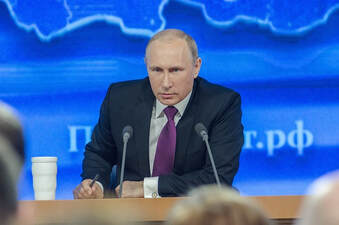 This week marks the second anniversary of Russia’s full-scale invasion of Ukraine on 24 February 2022. Seeing satellite images of a long line of Russian tanks heading towards Kyiv on that awful morning, few believed that the war would last more than a handful of days; weeks at most. I wrote at the time that Russian president Vladimir Putin had a whiff of Joseph Stalin about him, as he stepped up his attempts to recreate Stalin’s Soviet empire by taking control of Ukraine. Now that whiff has become more of a stench. The death of Alexei Navalny, Putin’s most prominent critic, on 16 February makes the parallels between the two dictators starker than ever. Like Stalin, Putin views the outside world as a hostile and threatening place and brooks no dissent. Stalin subjected his opponents to show trials, found them guilty on trumped-up charges and had them shot. Today, anyone who publicly opposes Putin’s regime, who attempts to tell the truth, expose the corruption, is a grave threat. Putin’s methods of silencing opponents are more varied – imprisonment, poison, shooting, defenestration, a plane falling from the sky. Again like Stalin, Putin heads a cruel and corrupt administration, but has built a personality cult around himself to appear as a paternalistic leader who has the best interests of his citizens at heart. Both regimes have been guilty of hiding or falsifying data and masking the truth with a state-sanctioned view of world events and a thick veneer of propaganda. At the time of writing, the cause of Navalny’s death is unclear. A video taken the previous day showed him looking surprisingly well given the inhumane conditions in which he was incarcerated. His family and legal team have repeatedly been refused access to a mortuary where his body is believed to lie. Just days before Navalny’s death, another Russian politician, Boris Nadezhdin, was barred on technical grounds from standing against Putin in next month’s presidential election. Nadezhdin has been careful to play by the Kremlin’s rules, to avoid calling out or criticising Putin, but he is a vocal opponent of the war in Ukraine. Russia-watchers had considered he might be allowed to remain on the ballot to give the appearance of competition, and to provide a narrative for Putin to rally against. But Nadezhdin proved too popular. A hundred thousand Russians flocked to sign supporter lists to enable him to stand against Putin, so the electoral commission ruled that thousands of the signatures he had gathered were fraudulent. Nadezhdin continues to appeal the ruling, but he must now be looking over his shoulder in case FSB officers are sent to arrest him, just as those who opposed Stalin’s regime lived in fear of a knock at the door in the middle of the night. Another parallel between Putin’s Russia and Stalin’s Soviet Union can be found in the Russian-occupied cities of eastern Ukraine, where the Kremlin is carrying out ethnic cleansing just as it did in the 1940s. In Mariupol, Zaporizhzhia and other cities located in the regions where the Kremlin held rigged referendum votes on becoming part of Russia, the occupying authorities are doing all they can to wipe out Ukrainian identity. Mariupol, before the war a pleasant, leafy coastal city on the Sea of Azov, was besieged and almost razed to the ground in the spring of 2022. Now smart, Russian-built apartment blocks line newly reconstructed avenues planted with lawns and neat rows of trees. In these apartments live recently arrived Russians, shipped in from the Motherland with the promise of better housing, good jobs, higher wages. Many of the previous inhabitants fled the bombardment back in 2022, or were killed or taken prisoner during the siege. What’s more, around 5 million Ukrainians from the occupied territories are estimated to have been deported to Russia in the last two years, including 700,000 children. Those who stayed and survived, or returned, were forced to acquiesce with the occupying authorities, to become Russian. Access to social services, including pensions and maternity payments, is only available to those with Russian passports. This in turn means babies are born to Russian rather than Ukrainian nationals, and inherit Russian citizenship. They will go to schools where they are taught in Russian, be subject to Russian cultural influences and learn a Russian history curriculum filled with hateful rhetoric about Ukrainian Nazis. Refusal to apply for a passport of the occupying power leaves defiant Ukrainians living a shadowy undercover existence, while any show of insubordination is likely to land them in a Russian prison. Crimea has experienced the same manipulations of population and bureaucracy for the last decade, since the Russian annexation in March 2014. Ukrainians were forced out or coerced into giving up their citizenship, native Russians were encouraged to settle, and only those holding Russian passports can access schools, hospitals and social services. Most Russians, and many outside Russia, have long believed that Crimea was not really Ukrainian, that it was something of a Russian enclave inside Ukraine. After all, it had only become part of Soviet Ukraine in 1954, transferred by then premier Nikita Khrushchev from the Russian Federation (for reasons I discussed in a previous article). Crimea’s population at that time was roughly 75% Russian and it was home to the Soviet (now Russian) Black Sea Fleet. But that only tells a small part of Crimea’s story. The peninsula, strategically located at the centre of the Black Sea, was wrested from the Ottoman Empire by Russia in 1783 under Catherine the Great. Its population for centuries had been predominantly Crimean Tatar – a Turkic-speaking, Sunni Muslim ethnic group. In 1944, Stalin deported the Crimean Tatars en masse to Siberia, the Urals and Central Asia and expelled Crimea’s smaller populations Greeks, Armenians and Bulgarians. The peninsula was repopulated with ethnic Russians. Since the collapse of the USSR in 1991, many Crimean Tatars had returned to their homeland, along with other ethnic groups, who were granted citizenship rights by the Ukrainian government. 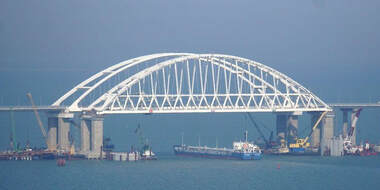 Russian air strikes on the centre of Kyiv and other Ukrainian cities this week killed at least 19 people and injured dozens more. The missile attacks came two days after the bombing of the Kerch bridge, the only direct link between Russia and Crimea – the area of Ukraine annexed by Russia in 2014. Russia’s former president Dmitry Medvedev described the air assault as the "first episode" of Moscow's planned response to the bridge attack. Vladimir Putin labelled the explosions that took out a section of the road bridge and caused significant damage to the rail line as “terrorist acts” by Ukraine and promised a harsh response. Moscow has blamed Ukraine’s security services for the attack, which occurred when a truck blew up while crossing the heavily fortified bridge, killing four people. Ukraine has not claimed responsibility for the actions. Although the Kerch bridge might appear an obvious focus for a Ukrainian attack, given its strategic and symbolic worth to Russia – and to Putin in particular – it is no surprise that it has not been targeted successfully until now. The 12-mile steel and concrete bridge is heavily defended. It is fortified with Russian air defence missile batteries, and surrounded by barges with radar reflectors to act as radar decoys and confuse Ukrainian missiles. The bridge is also patrolled by elite troops and combat air defences, with attack helicopters at the ready nearby. Even with its sophisticated weaponry supplied by the West, Ukraine lacks the means to inflict lasting damage on such a structure. For Ukraine, the bridge is a key military target, given its role as a strategic supply and logistics route for Russian forces on the southern front centred around Kherson, taken by Russia in the early days of the war and still the only major Ukrainian city to have fallen to the enemy. A Ukrainian operation to seize back territory around Kherson was already seeing some success before the bridge attack. The Kerch bridge is also crucial for the supply of food, fuel and other goods to Crimea itself. The bridge is important in symbolic as well as practical terms. It is a manifestation of Russia’s annexation of Crimea – the only direct link between Russia’s transport network and the Crimean peninsula. Costing $3.6bn, it was built by a firm belonging to Putin ally Arkady Rotenberg – a former judo partner of the Russian president – and is the longest bridge in Europe. In 2018, Putin himself opened it to great fanfare by ceremoniously driving a truck across the strait. The bridge was described by Russian state media at the time as “the construction of the century”. That the explosions occurred a day after Putin’s 70th birthday will not have been lost on him. Russia’s annexation of Crimea in March 2014 followed immediately after the Revolution of Dignity – Kyiv’s long and bitter Maidan uprising that forced then-president Viktor Yanukovych to stand down after months of brutal government crackdowns on protestors. The demonstrations had begun as a protest over Yanukovych’s failure to sign an association agreement with the European Union, following an eleventh-hour reversal under pressure from Putin. The Russian president had threatened to cut of gas supplies to Ukraine, while dangling a carrot of advantageous participation in his latest project – a Eurasian customs union. Crimea has always been somewhat apart from the rest of Ukraine. It became part of the Russian Empire in 1783 following a battle against Ottoman forces. Within the Soviet Union, it was transferred from the Russian to the Ukrainian Soviet Socialist Republic in 1954, with the official rationale that its transfer commemorated the 300th anniversary of the reunification of Ukraine with Russia (a reference to the 1654 Pereiaslav Agreement) and in recognition of the territorial proximity of Crimea to Ukraine and their cultural, economic and agricultural affinities. Neither of these justifications stands up to much scrutiny. Although Crimea is attached by land to Ukraine – via the isthmus of Perekop – and had important economic and infrastructural ties with Ukraine, its cultural and military links were always stronger with Russia. Ever since Tsarist times, Crimea had been the site of key military bases and was a symbol of Imperial Russian power against the Ottoman Turks. The naval base at Sevastopol is famously the home of Russia’s Black Sea Fleet. What is more, the ethnic mix of Crimea’s population of just over a million at the time of its transfer to Ukraine was roughly three-quarters Russian and a quarter Ukrainian. The peninsula had been populated for centuries primarily by Crimean Tatars, until 1944 when Joseph Stalin had ordered the ethnic cleansing of Crimea, deporting the Tatars en masse to Central Asia. Smaller populations of Armenians, Bulgarians and Greeks were also expelled from Crimea. According to an article by the author and academic Mark Kramer for the US think tank, the Wilson Center, the real reasons for the Soviet authorities’ decision to transfer Crimea to Ukraine are quite different. Of particular importance, he says, was the role of Soviet premier Nikita Khrushchev who, at the time of the transfer in February 1954, was still trying to consolidate his position in the post-Stalin power struggle. For Khrushchev, securing Crimea for Ukraine was a means of winning support from local Ukrainian elites – in particular Oleksy Kyrychenko, who had become first secretary of the Communist Party of Ukraine – in his battle for power with Soviet prime minister Georgy Malenkov. Khrushchev himself had served as the head of Ukraine’s Communist Party until 1949, and had overseen brutal efforts to enforce Soviet control over an unwilling and restive population in the parts of western Ukraine annexed from Poland in 1939. In the wake of the atrocities, Kramer says, the transfer of Crimea acted as a means to fortify and perpetuate Soviet control over Ukraine, with the addition of around 860,000 ethnic Russians to an already large Russian minority in Ukraine. In his closing remarks at the session of the Supreme Soviet in 1954, chairman Kliment Voroshilov declared that “enemies of Russia” had “repeatedly tried to take the Crimean peninsula from Russia and use it to steal and ravage Russian lands”. How ironic his comments appear today, in light of the 2014 annexation and the current war, with Russia itself first taking Crimea from Ukraine and now using it as a supply and logistics hub to steal and ravage Ukrainian lands. 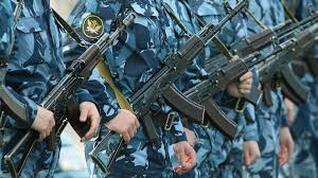 So, Ukraine may soon be at war once again. Over 100,000 Russian troops are massing at the Ukrainian border, including in Belarus – just a few miles from the Ukrainian capital, Kiev. The Americans are piling weapons into the country and pulling out their diplomats, Nato is reinforcing its eastern borders, and Israel is preparing for another mass wave of immigration by Ukrainian Jews. Linked to Russia by centuries of history, and an economic powerhouse of the Soviet Union thanks to its agriculture, coal and heavy industry, Ukraine has changed enormously since gaining independence in 1991. When I first visited, in January 1992, Kiev was a drab, grey Soviet city, its beauty masked by leaden skies and decades of stagnation. The streets were covered in snow – lovely in the early morning after an overnight flurry, but later slushy and treacherous with ice. There were few opportunities to escape the cold – pleasant ones at least. My friend and I ducked into a restaurant for some respite; it served nothing but cucumbers and garlic, both pickled, and unidentifiable meat and gristle patties, or kotleti. Being vegetarian in the embers of the Soviet Union wasn’t easy. The waitress brought us a sorry-looking bunch of red carnations and indicated two men at the only other occupied table, who wanted to give them to us. We declined. They started shouting. It all got a bit nasty and we left as quickly as we could. That was not an unusual experience at the time. Today Kiev is a thriving city with a young, highly educated population, tech savvy industries and a wealth of eateries serving cuisines from all over the world. It looks to the west, rather than the east, after the hard-won popular uprising of 2013-14 – the Revolution of Dignity – which deposed the pro-Russian president Viktor Yanukovych. That brutal three-month stand-off brought tens of thousands of protestors to Kiev’s central Independence Square, or Maidan, in sub-zero temperatures. It began as a demonstration against the president’s refusal to sign an agreement with the European Union to enable greater rapprochement, and ended in all-out war against a government rife with corruption and cronyism that used horrifying violence against peaceful protestors. More than 100 people died during the conflict. I am currently immersed in the events of that winter, which form the backdrop to part of my half-finished novel. Russia took its revenge for Ukraine’s reorientation to the west with the annexation of Crimea and by fostering war in the Donbas region of eastern Ukraine, which has killed around 14,000 people, some 3,000 of them civilians caught in the crossfire. Over a million residents of eastern Ukraine have been forced to leave their homes. The conflict led to the downing of a Malaysia Airlines flight in July 2014 by pro-Russian separatist fighters, killing all 298 people on board. The war has continued to rumble on inconclusively ever since, with sporadic outbreaks of violence. Russian president Vladimir Putin has always denied Russian military involvement in Crimea and the Donbas. Ukrainians referred to the armed troops piling into Crimea in February-March 2014 as “little green men”. Putin insisted the little green men were local self-defence groups – who just happened to be wearing Russian army uniforms – and had nothing to do with him. In the warring Donbas, he put responsibility firmly at the feet of pro-Russian separatists in Ukraine and insisted any Russian nationals in the rebel-held region were there on a purely voluntary basis. Western countries have always accused Russia of providing troops, equipment and funding to the separatists and have sanctioned Moscow over its role in the conflict. Indeed, the presence of Russian troops was proven during a recent unrelated court case. Fast-forward to today and Putin is making no denials about the troops massed on Ukraine’s borders. The increasing militarisation is bringing the possibility of war in Europe ever closer. But the Russian leader has always been unpredictable and his intentions are very difficult to second guess. Destabilising an increasingly western-oriented democracy on his doorstep – in a country he considers within Russia’s sphere of influence – has long been his intention. If Ukraine is allowed to thrive, his worst nightmare could come true – Nato and the European Union wielding influence right on his doorstep. What form this war may take is anyone’s guess. Hybrid warfare is already well underway with a cyber-attack on Ukrainian government websites earlier this month and warnings of a “false flag” operation by Russian saboteurs in the country to create a pretext for an attack. There is talk of a Russian puppet-leader – former Ukrainian MP Yevhen Murayev – waiting in the wings to replace President Volodymyr Zelensky. Another politician named in the alleged plot is Mykola Azarov, formerly Ukraine’s prime minister under Yanukovych. Ukraine and the West will have to wait and see what Putin decides to do next. We may not have to wait very long. 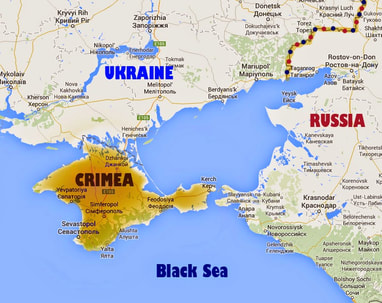 The West is once again engaging in reprisals against Russia and considering wider sanctions in the wake of the poisoning of former Russian spy Sergei Skripal and his daughter in the UK. The moves come four years after the European Union and United States first imposed sanctions in the wake of Russia’s annexation of Crimea. On 16 March 2014, Crimea held a referendum on its status, and two days later it became a constituent part of Russia. The referendum was declared to have achieved an overwhelming majority, with more than 80% in favour of annexation by Russia. But no Western observers were able to monitor the ballot and it attracted widespread criticism. Turnout figures in particular were thought to have been massively inflated, with the number of citizens actually voting for a Russian takeover possibly closer to the 30% mark. Both Kiev and the leaders of the Tatar community urged their citizens to boycott the vote. The annexation of Crimea, while shocking from a legal and human-rights perspective, should not have surprised informed observers. It followed months of unrest in the Ukrainian capital, Kiev, that had spread across the country, tipping the situation from protest to civil war. The dismissal of a compromise deal on 21 February by the leaders of the revolt, the flight of President Viktor Yanukovych and the formation of a so-called ‘unity’ government in fact made up predominantly of anti-Russian and nationalist members, were factors in the increasing radicalism taking hold in Ukraine. Across the country, statues of Lenin were toppled, provoking a counter-mobilisation in Russian-speaking areas such as Crimea and the Donbas in the east of the country. Sections of society opposed to the pro-Western and nationalist forces that had occupied Kiev’s central Maidan, or square, since November began to seize government buildings, copying the tactics of the protesters in Kiev. Armed militants gained quasi-official status, patrolling the streets and providing ‘security’. Anti-Maidan sentiment was strongest in Crimea and it is remarkable that Russia’s takeover of the region passed so peacefully given the state of confrontation elsewhere in the country. Crimea’s history as a part of Ukraine was a short one. It was transferred from Russia to the Ukrainian Soviet Socialist Republic only in 1954, at a time when major water courses were being developed from Ukraine to irrigate Crimea’s arid, desert landscape with water from the River Dnieper – bringing Crimea under the Ukrainian republic’s jurisdiction at that time made logistical sense. At the dissolution of the USSR in 1991, Crimea was treated as a special case, being home to the Russian Black Sea Fleet at Sevastopol. Sevastopol was recognised as having ‘all-union significance’ and therefore would normally have reverted to Russia when Ukraine gained its independence, given Russia’s role as the ‘continuer state’ of the Soviet Union, assuming the former country’s obligations and privileges. At the time Russia, under President Boris Yeltsin, did not pursue the idea assuming, one imagines, that the relationship between the two countries would continue as before under the newly formed Commonwealth of Independent States. The events of early 2014 prompted Russian fears that it would be evicted from Sevastopol. On 28 February, soldiers took control of the local airport at Simferopol, under the pretext of protecting Russians in Crimea from Ukrainian nationalism. Although Russia officially denied sending in forces, armed military seized control of strategic areas. As late as 4 March, Russian president Vladimir Putin denied any intention of annexing Crimea, although he stated that residents should have the right to determine the region’s status by means of a referendum. The status of Sevastopol was just one of the factors behind the Russian annexation. The Kiev protests began after President Yanukovych failed to sign an Association Agreement with the EU in November 2013. With much of the population of western Ukraine clamouring for closer ties with the West, Putin feared that Russia would continue to lose status and influence in a region it had once called its own. Already most of the Warsaw Pact countries of Eastern Europe that had severed ties with the Soviet Union were fully-fledged members of the EU and NATO, including the three Baltic States that had been part of the USSR. If this were not enough for Putin to bear, the EU and NATO appeared to be creeping even closer, right into his backyard. Ukraine’s history as the birthplace of modern Russia dating back to medieval Kievan Rus’ and the two nations’ close – even intertwining – ties throughout their history, make Ukraine a special case. “We are not simply close neighbours, but we are one people,” Putin said. “Kiev is the mother of Russian cities. Ancient Rus’ is our common source and we cannot live without each other.” Putin perceived that he was being repeatedly snubbed by the US and EU in their pursuit of closer ties with Ukraine, and as the West has repeatedly learnt, Hell hath no fury like the Russian president scorned. The Western powers should have paid more attention to that great diplomat of the 20th century, Henry Kissinger, who said, “Far too often the Ukraine issue is posed as a showdown: whether Ukraine joins the east or west. But if it is to survive and thrive, it must not be either side’s outpost against the other, it should function as a bridge between them. The West must understand that to Russia, Ukraine can never be just a foreign country.” |
Keeping stories aliveThis blog aims to discuss historical events relating to the Jewish communities of Ukraine, and of Eastern Europe more widely. As a storyteller, I hope to keep alive stories of the past and remember those who told or experienced them. Like so many others, I am deeply troubled by the war in Ukraine and for the foreseeable future, most articles published here will focus on the war, with an emphasis on parallels with other tumultuous periods in Ukraine's tragic history. Archives
March 2024
Categories
All
|
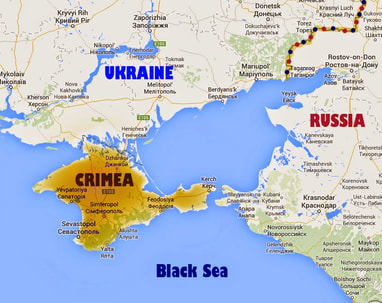
 RSS Feed
RSS Feed
